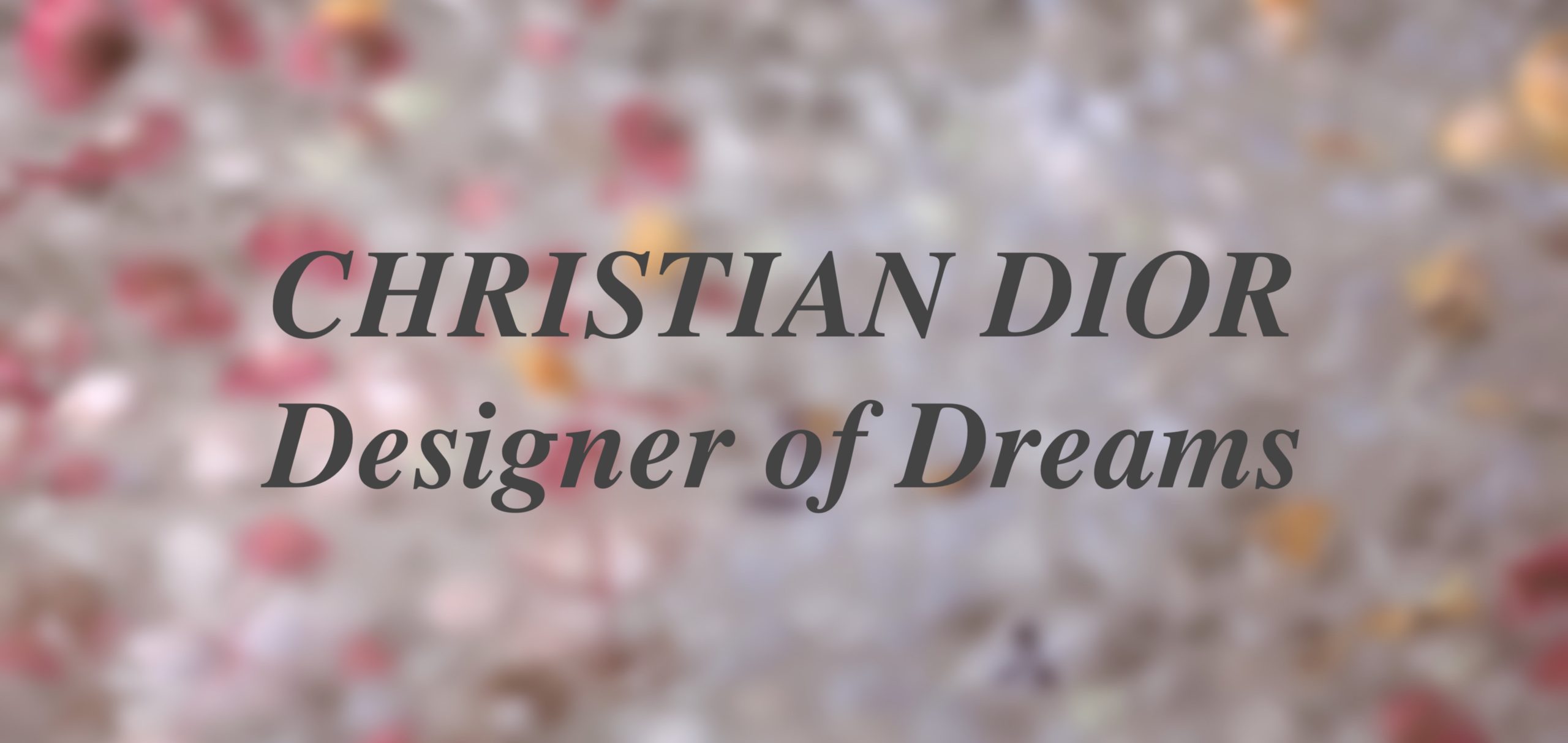‘Maman, je hais les bottes’, a little girl informed her mother of her dislike for a mannequin’s boots.
‘C’est quand même assez chic’, her sister disagreed.
‘I had a jacket rather like that in the eighties’, reminisced an older woman.
‘I don’t like that at all’, her friend with the pompadour and purple coat and countered.
‘Elaine liked the green dress.’ Who is Elaine?
Such are the sorts of things you might hear as you weave through the day-dreamscape that is the V&A’s Christian Dior: Designer of Dreams. For a few minutes, I thought of framing my visit as one made through others’ impressions—those of Madame de Pompadour and opinionated French children. Never had I been more tempted to eavesdrop, but with the over 500 exhibits and some truly fabulous displays, soon my own impressions became more than enough to catalogue.
This is a favourite feeling: the heart-eyed, physical and emotional sense of being so visually overwhelmed that you don’t know where to turn your gaze first. At one point, I stood and looked up at the smart-tech surface of a classically ‘painted’ ceiling explode in gold shimmers and fade to constellations before sitting down to watch the light show again. And again. And then once more.
An evolution of the Musée des Arts Décoratif’s Christian Dior: Couturier du Rêve, Dior begins with a small biographic timeline and a morphology of the Bar Suit—its oh-so-recognisable New Look silhouette and variety of iterations. The visitor is then guided through a shiny white model of the designer’s 30 Avenue Montaigne façade into an organic suite of themes, including the newly arranged ‘Dior in Britain’. Featuring Princess Margaret’s 21st birthday couture gown as its statement piece, this section treats Dior’s Anglophilia, collaborative endeavours with British fashion manufacturers and success amongst British clients.

In the first of the nine sections beyond the anteroom, ‘The Dior Line’ presents ten quintessential Dior looks from 1947 to 1957: the ten-year span between Dior’s first collection and his death at age 52. Faced with the glowing strips of light delineating each mannequin’s space against the black background and the mirrored frames, my eyes slipped in and out of focus and my depth perception felt spotty. Curators suggest the timelessness of the line’s formative years in the telescopic space between opposing mirrors, and the selected ten ensembles become an endless stream of Aladin and Blandine, Maxim and Mazette.
With subsequent sections centred around ideas rather than chronologically, the exhibition maintains an equilibrium between cohesiveness-continuity and variety-expansion. The ‘Garden’ room reminds us of the inverted flower shape of the New Look—la corolle. The maximalism of John Galliano’s 2004 Look 4 Ensemble, resplendent in velvet, damask silk and erminesque rabbit fur, resonates with Christian Dior’s taste for romantic historicism. And the 2016 appointment of Maria Grazia Chiuri as the first female creative director takes the Dior ethos of ‘N’oubliez pas la femme’ to a new dimension, where a woman is no longer simply in a position to be considered—dressed and celebrated—but to lead the House of Dior.

Exhibition highlights include the crisp, ultra-exposed showcase of ‘The Atelier’, with its variety of workshop toiles: look closely, and you may recognise designs previously exhibited. Accompanying videos of meticulous craftsmanship are a bit hypnotic. Have you ever thought of how the bows on the bottles of Miss Dior are cut and tied by hand? The Diorama arranges seven decades of shoes, sketches, accessories and makeup in a rainbow fade, and I made a game of spotting the most modern of Chiuri’s tarot enamel minaudières amongst seventy years of material history.
The final exhibition piece is the ‘Eventail de vos hasards’ dress, in which Chiuri transposed Dior’s promotional fan from the 1950s to the pale pink tulle skirt of the gown. Holding the original fan, the mannequin stands alone amidst reflections of itself in a now-familiar play of doubling, inversion and self-reference. Dior ends with an image of the future, grounded in the past, of endless openings and chance.

Christian Dior: Designer of Dreams is on display at the Victoria & Albert Museum until Sunday, July 14.


















